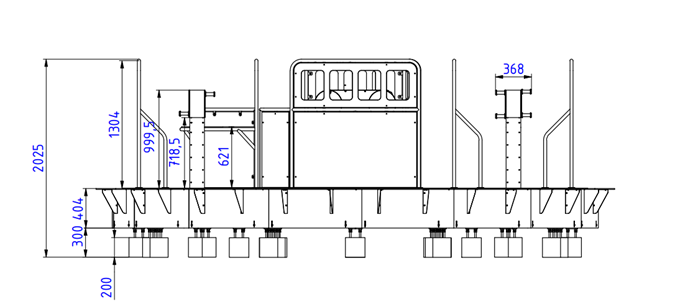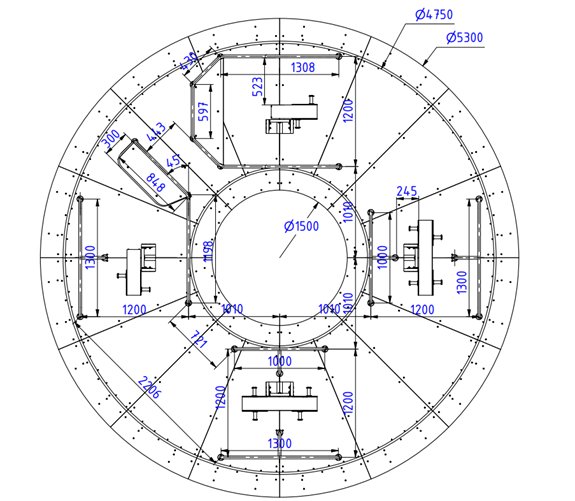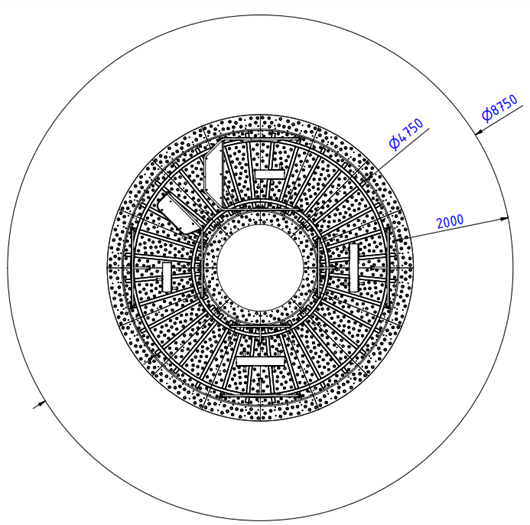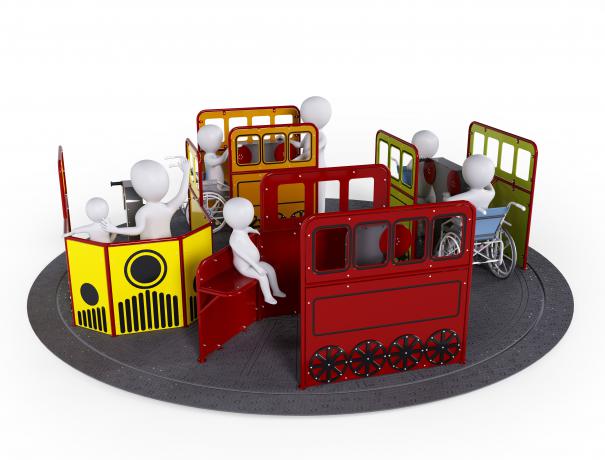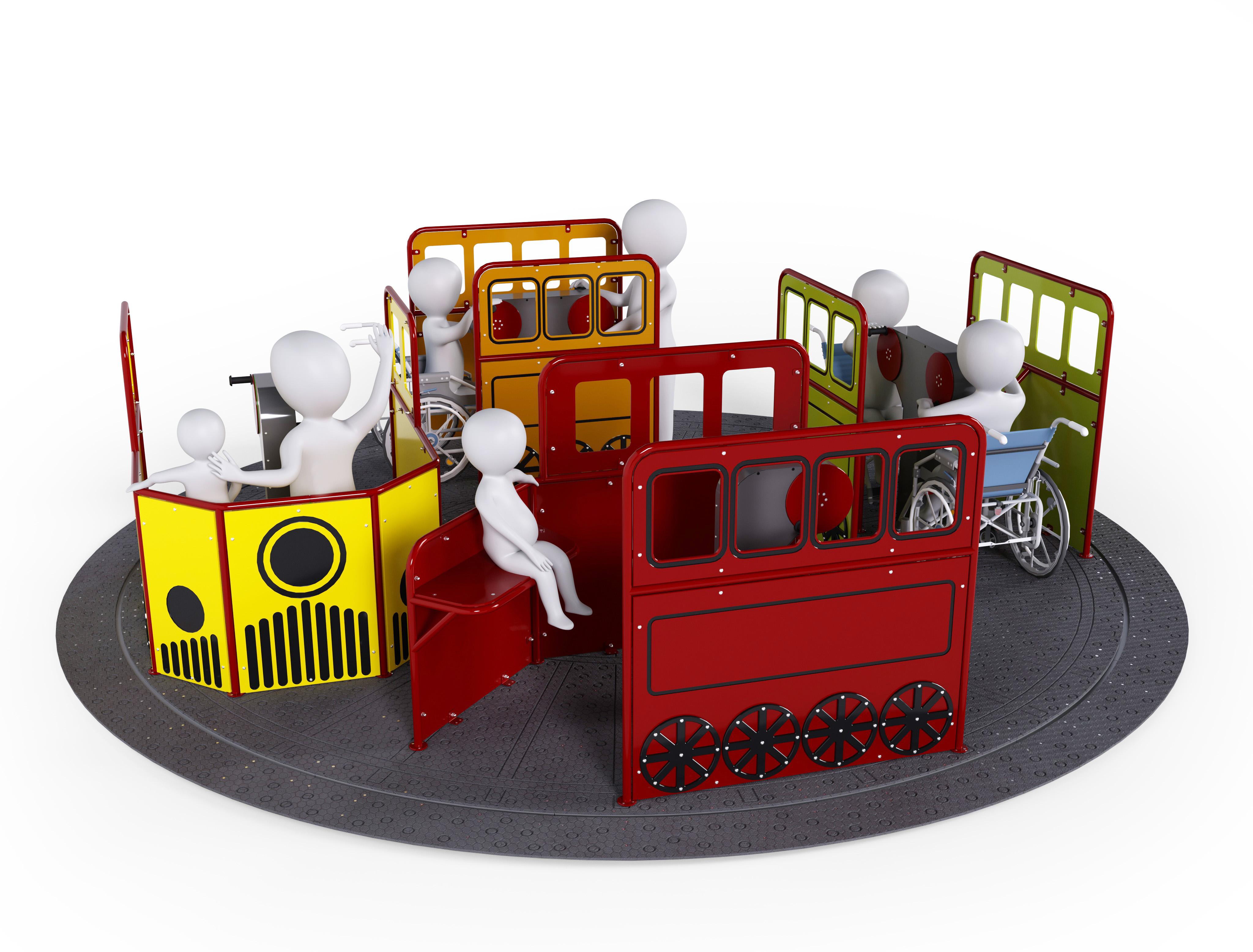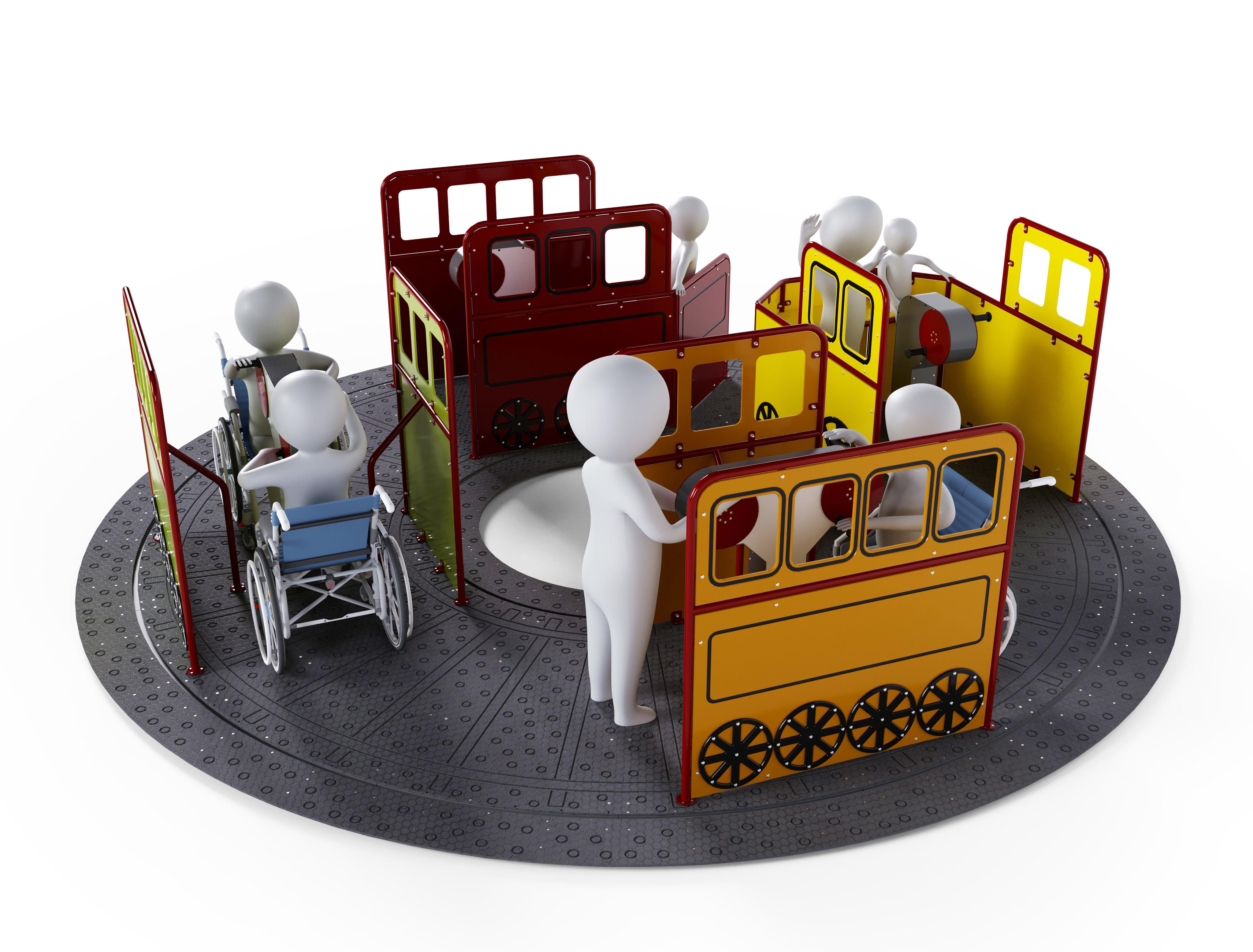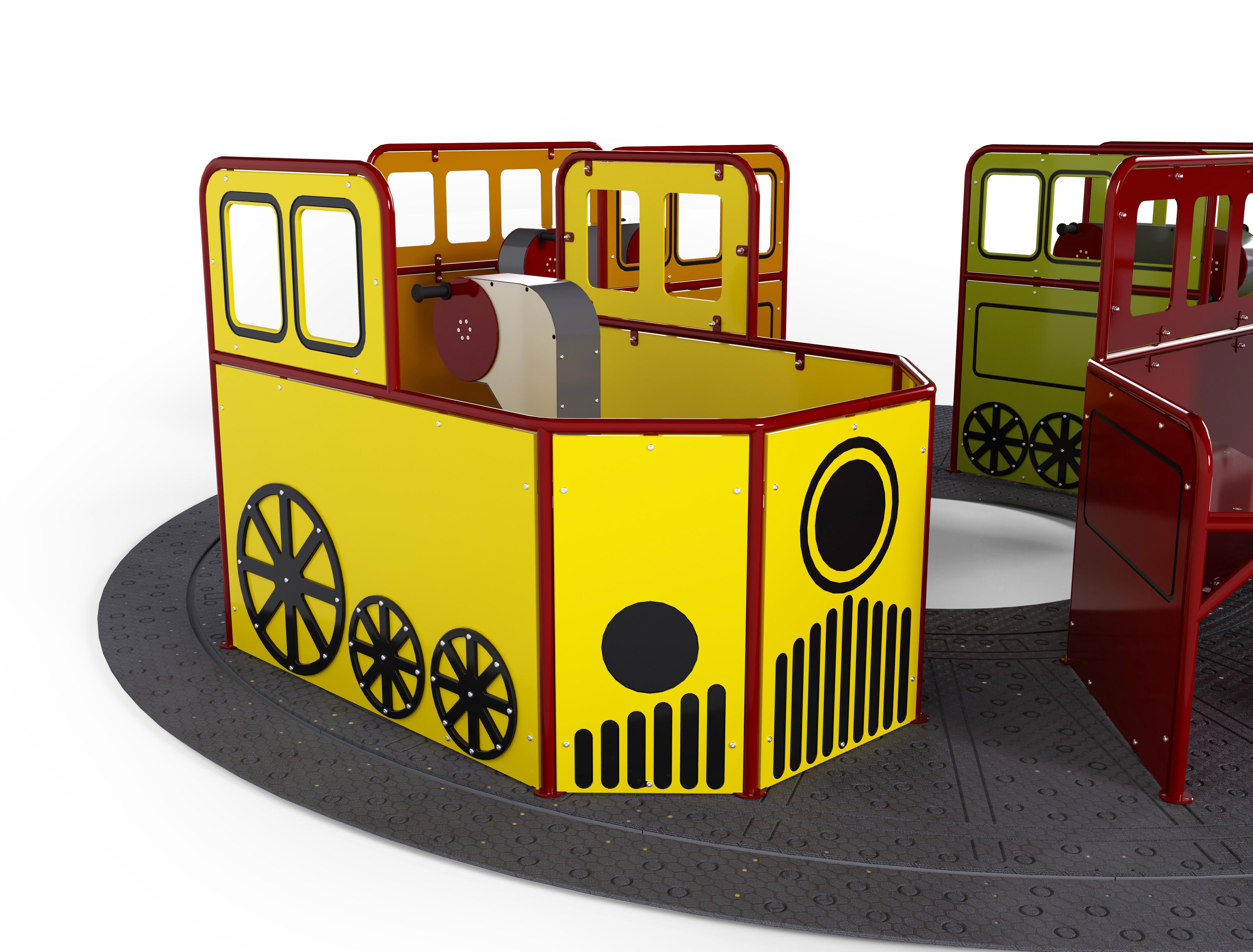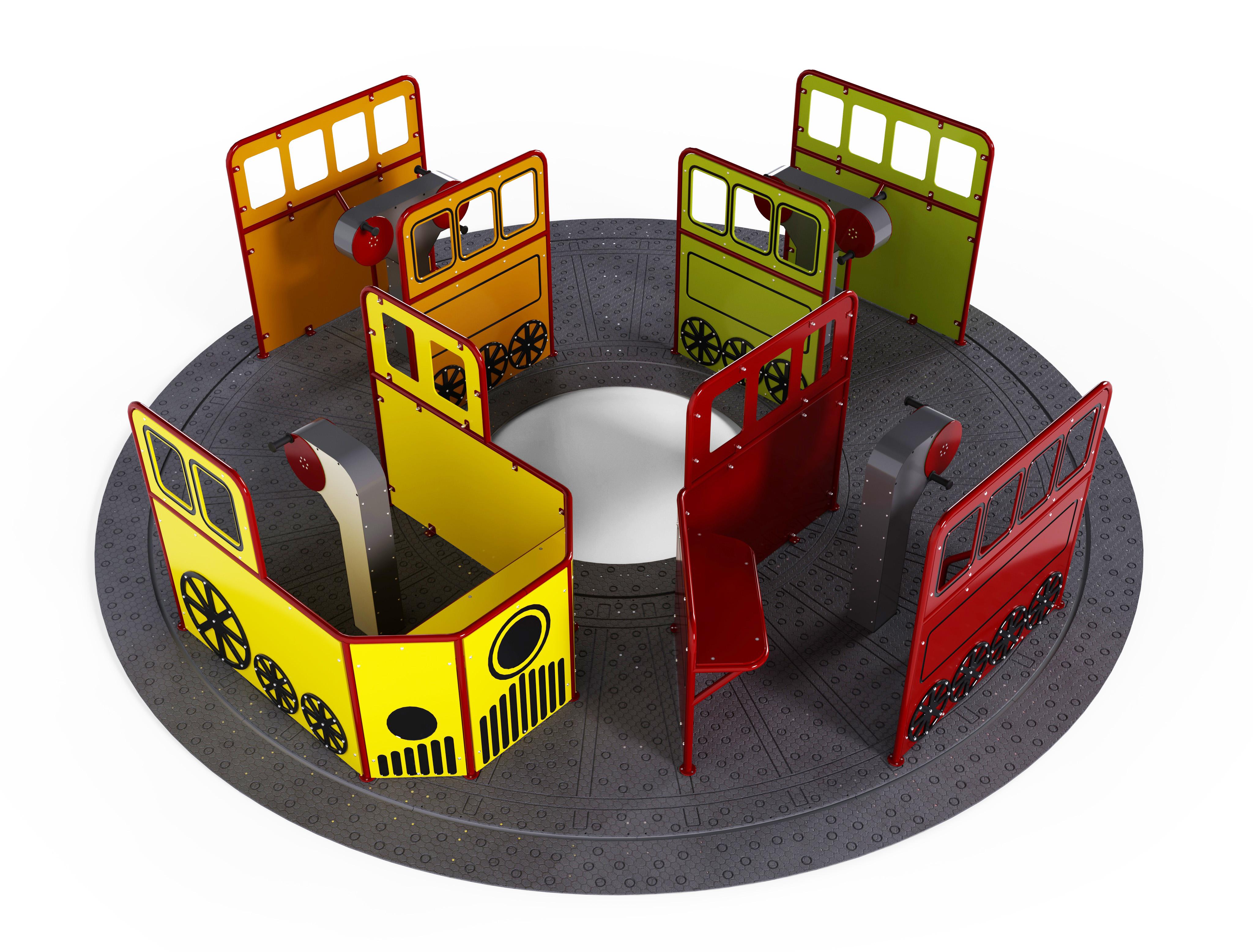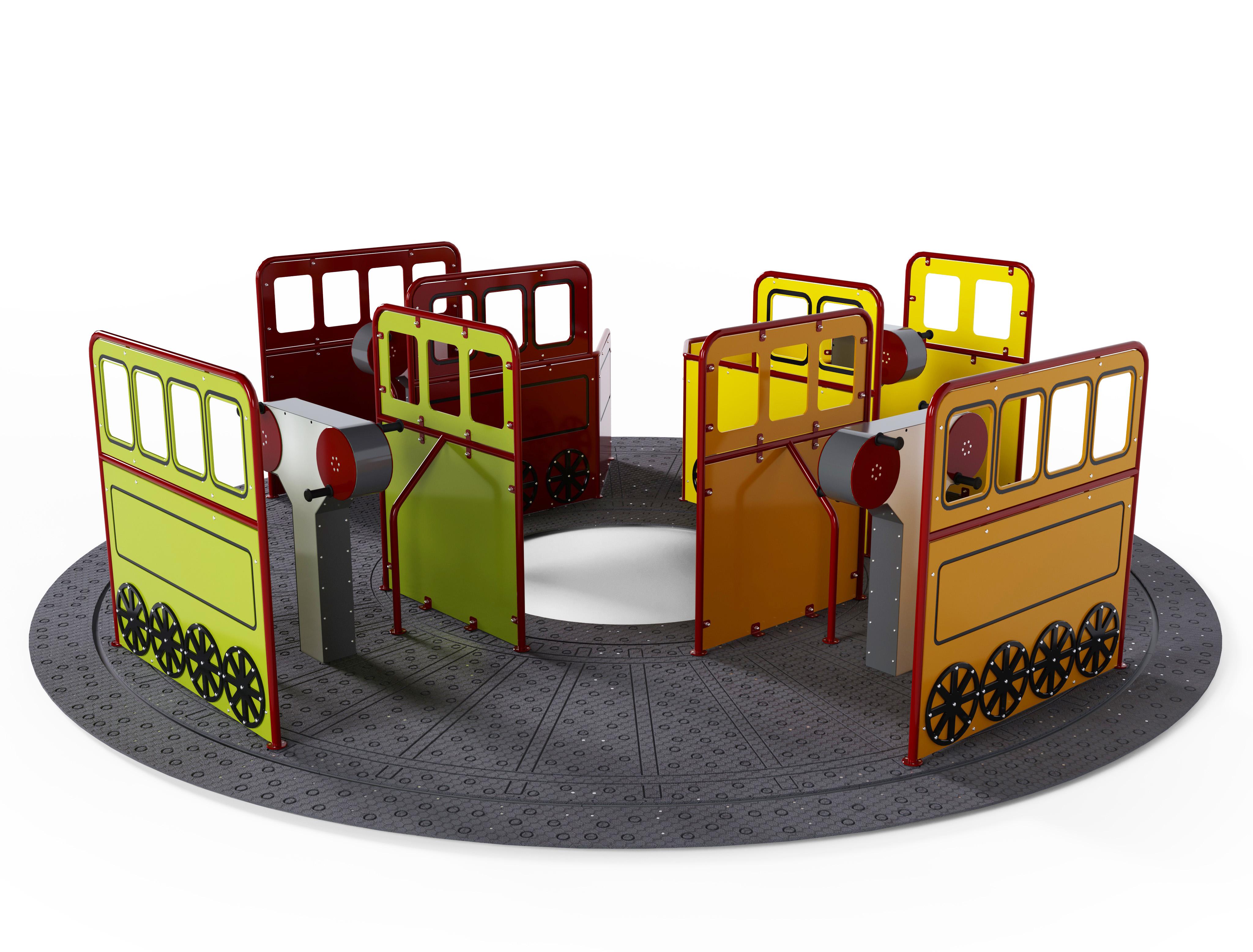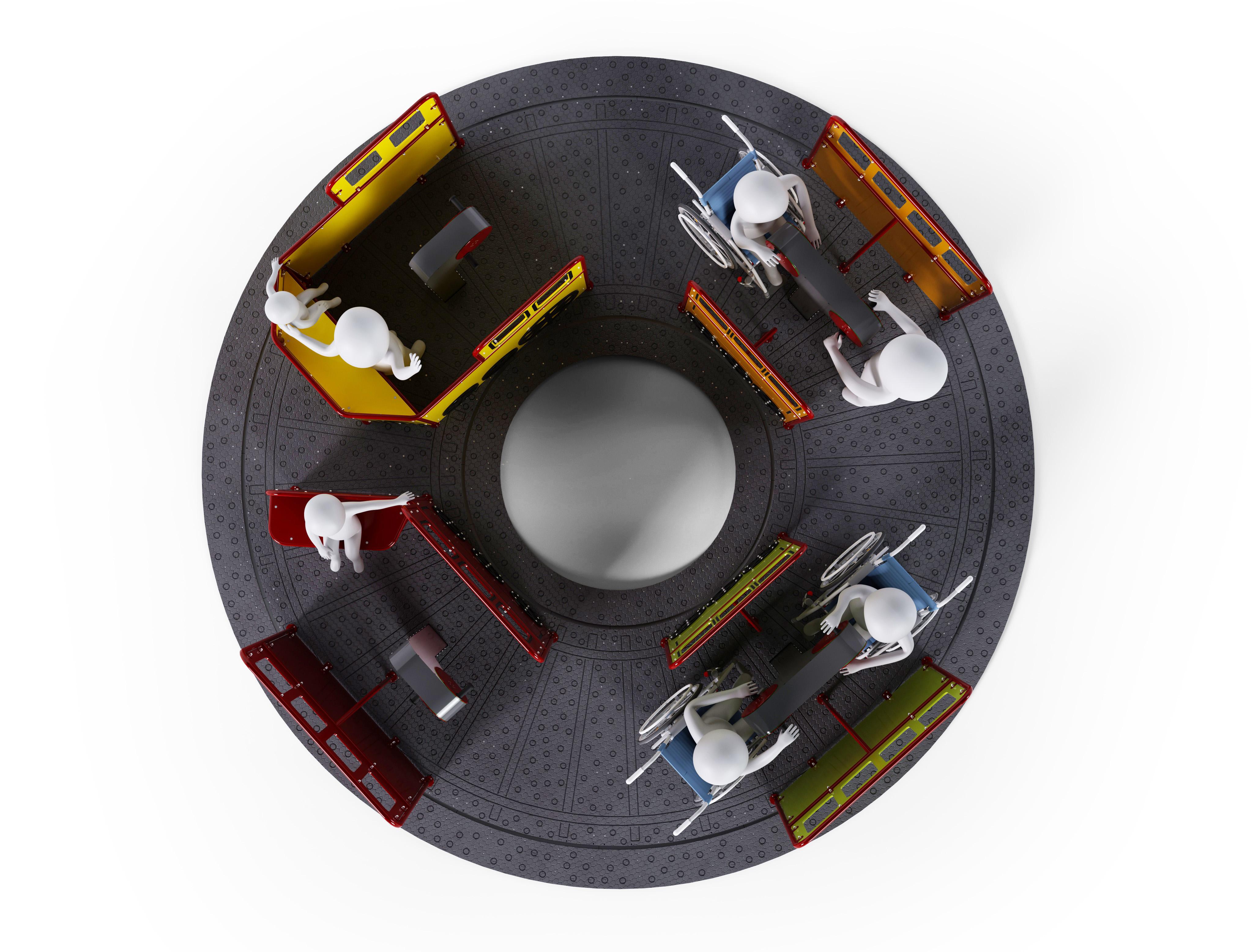Medical devices We design to help
3D configurator
Description
- The TERMA Inclusive Train is a device in the form of a carousel powered by rotors, single- or double-station. The device has no access barriers and is intended for use by both able-bodied and disabled users, including people in wheelchairs.
- For people with disabilities, the aspect of "agency" is particularly valuable, which involves setting the wheel in motion by performing exercises on a rotor for the upper limbs.
- People with disabilities, including those in wheelchairs, can play on the device at the same time, together with able-bodied people in various configurations of these users
- The device is equipped with two seats that can accommodate 2 people who do not operate the rotors.
- 6 people can operate the rotors on the device at the same time. The device can be started by 1 person. The device can accommodate 20 people at the same time.
- The device complies with the PN-EN 1176 standard.

Rehabilitation
For non-disabled users, for people with disabilities resulting in moving in a wheelchair. For people with intellectual disabilities, with neurological disorders (strokes, MS).
| Neurological rehabilitation | Kinesiotherapy |
| Stimulation of the nervous system in the case of paralysis and paresis using a rotor. Possibility of performing assisted movements when the rotor is driven by a non-disabled user and a disabled person performs the movement without using force, but thus restores neuromuscular control. Indications for the use of rotors include: multiple sclerosis, post-stroke conditions, biplegia, spastic paralysis, Parkinson's disease and other neurological and musculoskeletal diseases. Propelling the movement of the device with the power of your own muscles gives you a sense of agency, which is very important in the treatment of intellectual disabilities, and also gives you the opportunity to train independence. | The mechanism of the rehabilitation rotor allows the device's wheel to be set in motion using levers powered by the upper limbs. A number of muscle groups of the upper limbs are involved in the movement - agonistic and antagonistic - cooperating with each other and performing the opposite movement - extension/flexion (in the shoulder, elbow and wrist joints). Possibility of performing assisted movements when the rotor is driven by a non-disabled user and a disabled person performs the movement without using force, but thus recreates the correct ranges of movement in the joints and works on the coordination of alternating movements. |
Technical details
Materials:
Construction: mild steel profiles coated with epoxy primer and powder coating
Platform: HPL board
Carriage panel: HDPE board
Substructure: concrete minimum B-15 class
Dimensions and parameters:
External dimensions: średnica 4705 mm
Height of the device from the ground level: 1304 mm
Weight of the device (without foundation): 2100 kg
Foundation depth: 604-704 mm, regulated on the foundation positioning foots
Dodatkowe informacje:
Free fall height: none
Safety area dimensions: 2000 mm radius measured from the external edge of the rotating platform
Functional area dimension: 61 m2
